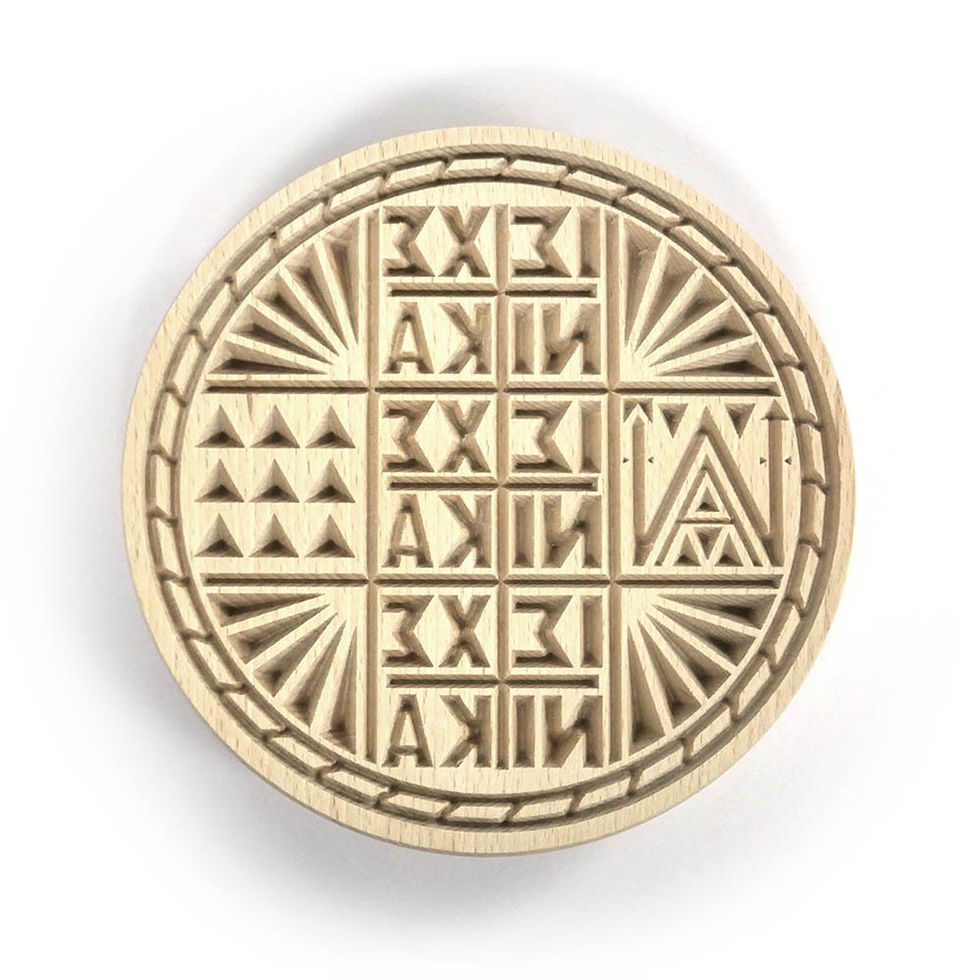Prosphora (Greek for "offering") is holy bread prepared for use in the Divine Liturgy. This bread is traditionally prepared and baked by members of the local parish church, a continuation of the ancient practice in which parishioners would bring the bread and wine, and the deacons would select the best for use in the Liturgy. The bread is always leavened, because Our Lord used ordinary bread (artos) in the Last Supper. Yeast is a symbol of life, and the risen dough represents the Resurrection.
The bread is stamped with a special seal which is full of symbolism. The center portion, known as the Lamb, is consecrated during the Divine Liturgy to be the Eucharist. Other small pieces are removed in honor of the Theotokos, different orders of saints, and the living and departed Christians who we pray for. The rest of the bread is cut up and distributed at the end of the Divine Liturgy.
This seal is double-sided, enabling the baker to make either a Greek style (larger) or Slavic style (smaller) loaf. It is made of solid basswood (also known as linden wood or lime wood), sure to provide a lifetime of service to Christ.
Front side: Large Greek style seal with a diameter of 6.5 inches (16 cm)
Back side: Small Slavic style seal with a diameter of 3 inches (7 cm)
You can learn more about Prosphora and find recipes at Prosphora.com. (Note: Most priests have preferences on the recipe and method of their holy bread loaves. If you are baking Prosphora for your church, be sure to get your priest's blessing and ask for information beforehand.)
Do not get your seal wet as this may cause damage to your seal. Ensure your dough is the proper consistency to prevent any sticking while pressing.
